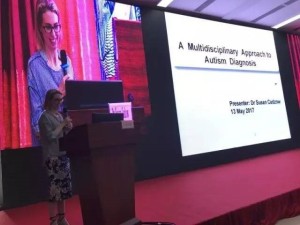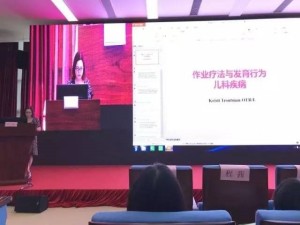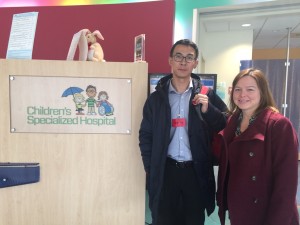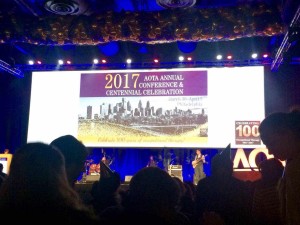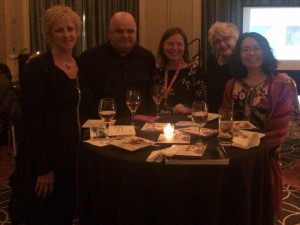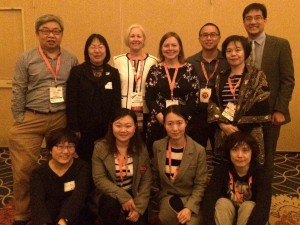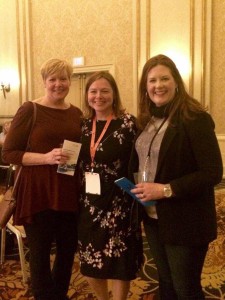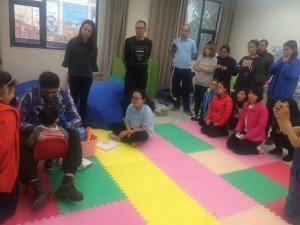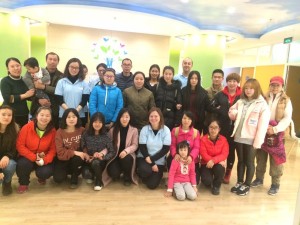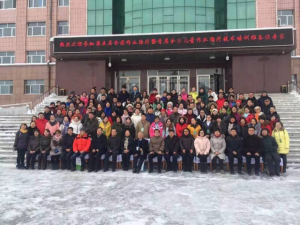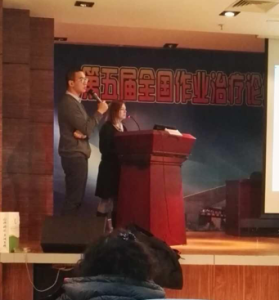
by Sorcha Ni Chadhain, Occupational Therapist, Eliott’s Corner, Beijing
YanYan slowly raised his head; there was a hint of something in his face…..and then it came; a wonderful, joyful smile and giggle straight from the belly! One quick connection of the eyes and the game started over. And that was it. That fleeting moment was enough to make us sure our visit was worthwhile. Thankfully there were many moments just like it throughout an intense but wonderful weekend spent in an orphanage in Shanxi province.
We are two occupational therapists working at Eliott’s Corner in Beijing. We first made a visit to this orphanage in September 2014. We were so taken with the children, the carers, and the great work being undertaken that it took little convincing to get us back on that train again 3 months later in December and again most recently in May 2015. The purpose of our visits have a few layers!

and by Kristi Troutman, Lead Occupational Therapist, Eliott’s Corner, Beijing
First and foremost, we are there to meet the children and their carers. Many of the children in this facility have various levels of disability and ability. Their carers, who love them dearly, have little training in providing specific ‘therapeutic’ interventions to develop these children’s skills and abilities. They are somewhat lucky in terms of the unique set-up, which allows one carer to care specifically for three children. Carers of course share duties and help each other out, but this means they have a constant, long-term ‘mama’ who feeds them, bathes them, and shares a room with them. For us, this allows a unique opportunity to train a carer to work on improving a particular skill for each child, be that developing eye-contact, learning colors, or just showing enjoyment.
Finding ways to actually provide training that works, to assess children in these environments and provide input that is sustainable after you get back on the train is often the greatest challenge in working with orphanages and other institutions. The best intentions in the world don’t always lead to sustainable change or lasting impact. But one of the factors that makes this place so special to work in, is the unyielding determination of the leaders and management to get the best out of life and provide the best out of life for these children. This means support, encouragement, and expectations for the carers, that they will have time, resources, and training provided so they can give ‘therapy’ on a daily basis for their kids, and see them change and grow over time.
For our part, this means an intense, whirlwind of a weekend. We have faced this challenge in a number of different ways each time we have visited. We have provided assessment, which is basically a process of meeting each child, talking to their carer about their challenges, and figuring out what particular skill or challenge to target, that if improved, would make a difference in that child’s life.
We turn this into a written goal. A goal that can be measured, so that when the child does make a change, it can actually be ‘counted’, written down, and shown to the world! This gives the carers hope, it shows leaders that intervention works, and it shows the world that these kids have potential, much more than they have often been given credit for in their short lives.
We also help to write care plans. These will stay with the children and remind the carers of various ideas and tips that can help them work with the child. It could be a simple pointer like; “My muscles are a little weak. Please help me to sit in a supportive chair when you want me to sit and use my hands.” With these ideas readily available to the carer, they soon learn to provide the best learning opportunities for the kids throughout their day.
Lastly, we try to provide specific training. We show each carer what we want them to work on for their kids and show them how to elicit the responses we are looking for. In YanYan’s case, he seems so detached from the world, uninterested in any toys, unresponsive to words, sounds, touch. But we discovered a little glimmer in him. Plopped up onto a huge therapy ball, nearly bigger than himself, we bounce him around….slowly at first to gauge his reaction….as predicted, it wasn’t much. Then a little faster and a little higher, add in a lively nursery song and suddenly his head is up, he seems alive! So we stop (counter-intuitive though it may seem)…….and we wait……and then we wait a little more…….and just as described, we eventually get it. The smile, the eye contact, the laugh. And that means we have him! He now knows he must use eye contact to show us he wants more, we now know something that motivates him! This is the key for YanYan! This gives him a reason to communicate, something to ask for, to respond to, to share! Showing his carers that there is something in there, and we just need to have the patience and persistence to find it, that is the goal.
All of these children, no matter their ability, their disability, their background, their future, they all have something to give us…..we just need to give first.
At the request of the orphanage, no identifying information has been included in this post.
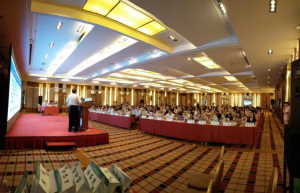 On 6-9 July, the Silk Road International Forum for Child Health 2017 was held in Xi’an by the Second Affiliated Hospital of Xi’an Jiaotong University and the Chinese Journal of Child Health Care. Nearly 500 experts in domestic and international pediatrics and health care participated in this meeting. A broad range of pediatric topics including early development, mental health, nutrition, growth and development, high risk infants, children with cerebral palsy, digestive health and allergic disorders, were discussed.
On 6-9 July, the Silk Road International Forum for Child Health 2017 was held in Xi’an by the Second Affiliated Hospital of Xi’an Jiaotong University and the Chinese Journal of Child Health Care. Nearly 500 experts in domestic and international pediatrics and health care participated in this meeting. A broad range of pediatric topics including early development, mental health, nutrition, growth and development, high risk infants, children with cerebral palsy, digestive health and allergic disorders, were discussed.




